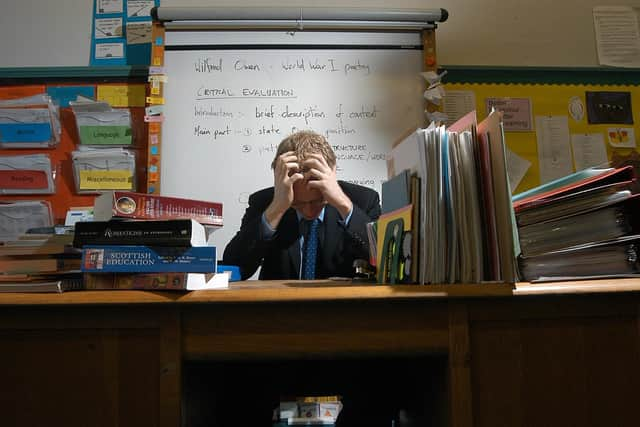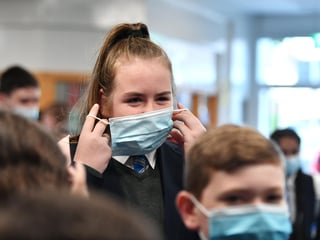Comment: What it's really like for Scottish teachers amid Covid-19 pandemic
Whether it’s to make a difference to the lives of young people, to try and give something back in recognition of their own positive or negative educational experiences, or maybe it really is because of all the school holidays – who knows?
Regardless, I can’t think of a single teacher I have ever worked with who has said they got into the profession because of a desire to save lives (or worse still, because they wanted to put their own life at risk).


Advertisement
Hide AdAdvertisement
Hide AdBy the very nature of the work that teachers do, they are generally speaking adaptable and receptive to change, even though they might not all easily admit to being that way.
But, in the 12 years I have been a teacher, very little could have prepared me for what the job has become, particularly now in 2020.
In the current set-up, as a secondary school teacher, I have been arriving at school each morning unsure how many pupils, teachers and support staff will be absent due to Covid, with the numbers
varying day to day and week to week.
My classroom is for the time being set up in single rows, with seating plans having to be strictly adhered to by pupils to more easily and readily assist with the relentless barrage of contact tracing enquiries handled each and every day by a single member of the school’s senior management team.
Depending on the numbers isolating, I can have up to 30 pupils in my classroom every 50 minutes.
Those in S1-S3 are not required to wear face masks, whilst those in S4-S6 are (yet, this needs a lot of policing).
The solution to increased ventilation in the classroom comes in the form of having windows opened – a pleasant experience in the midst of Scottish winter I can assure you – and desk cleaning between periods is done by pupils and teachers.
Then in the corridors, at the end of each lesson, there is the mass exodus of pupils leaving one subject department and heading to another.
Advertisement
Hide AdAdvertisement
Hide AdOne-way systems are in place, teachers stand at their doorways and any member of staff who possibly can will try and take position around the school in an attempt to ensure face masks are worn and pupils aren’t quite literally on each other’s shoulders. Sometimes it works, a lot of the time it just feels futile.
In amongst all this, there’s the actual business of teaching, sometimes to half-empty classes. It fluctuates greatly.
This means there has to be a provision of online access to resources and learning support materials as well as the ‘bread and butter’ stuff we provide in the classroom.
This is coupled with, in the wake of the 2021 SQA exam diet being cancelled, teachers clambering to collect as much evidence as they possibly can to support attainment-related judgments about the academic abilities of the pupils they teach.
And yet despite all of this – a mere snapshot – there continues to be in many circles a negative perception of teachers.
It’s as if on top of what we are already doing, we should be doing everything and anything else.
According to some, there are no limits to the things we should be doing, a public service with no boundaries, no cause for complaint and absolutely no grounds for dissent.
I never thought we were expected to – metaphorically – run into burning buildings? And if we are, where’s my flashing blue light and piercing siren?
Who am I kidding? I’d settle for a perspex screen at my desk and a larger stash of blue roll.
- Paul Hamilton is a history and legal studies teacher at Clydebank High School.
Comments
Want to join the conversation? Please or to comment on this article.
